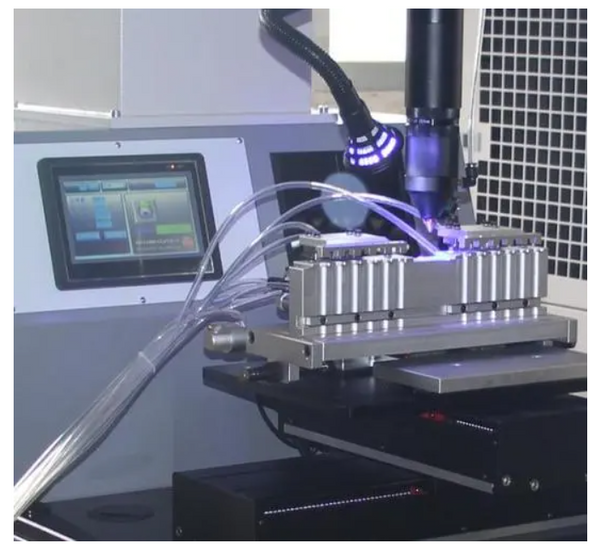The welding technology of lithium batteries is extremely important in the production process of lithium batteries, and its quality directly affects the performance and life of lithium batteries. For the welding technology of lithium batteries, it specifically includes the welding of wires/leads and the connection of electrode sheets. Among them, laser welding is one of the most commonly used welding methods. This article will introduce the welding technology of lithium batteries in detail from the above angles.
1. Welding technology of lithium battery wire
The selection and use of wires are very critical in the manufacture of lithium batteries. Currently, one of the most commonly used welding methods is done by laser welding.
1. Welding method
Use laser to corrugate the two ends of the wire first, then pre-drill holes on the electrode sheet, pass the wire handle through the hole, and finally weld the wire and the electrode sheet together with a laser.
2. Precautions
A. Select the appropriate wire diameter and material. When selecting a wire, it is necessary to consider its conductivity and whether it meets the requirements of lithium battery manufacturing.
B. The laser temperature should be adjusted according to the wire material. Wires of different materials have different soldering temperatures, which need to be adjusted according to specific conditions.
C. The laser welding time should not be too long to avoid wire deformation and weaken the mechanical strength.
2. Welding technology of lithium battery leads
In the production of lithium batteries, the welding of leads and the connection of leads and electrode sheets are very important steps. A suitable welding method can make the lead wire and the electrode sheet tightly bonded, thereby ensuring the stability of the lithium battery performance and the extension of the service life.
1. Welding method
A common wire bonding method is laser welding.
The specific operation process is as follows:
A. Prepare the wire: select the appropriate lead wire and prepare the two lead wires required for laser welding.
B. Prepare electrode sheets: According to production requirements, make electrode sheets into required shapes and sizes.
C. Positioning: Accurately position on the electrode sheet, and then use the laser welding head to weld.
2. Precautions
A. It is necessary to maintain a certain welding speed during laser welding to avoid excessive heating and deformation.
B. During the selection and preparation of lead wires, factors such as the use environment and application requirements of lithium batteries need to be considered to determine the appropriate material and diameter.
3. Connection of lithium battery electrodes
Electrode tab connection is the most important step in the lithium battery manufacturing process. A loose connection or poor quality will directly lead to a decrease in the performance and life of the lithium battery. The connection of electrode sheets is mainly based on two methods: heat sealing and laser welding.

1. Laser welding method
Compared with the heat sealing method, the laser welding method can make the material at the joint get better high temperature treatment, so that the welding quality is higher and the battery life is extended. At the same time, the storage time of laser welding is longer, which is suitable for battery products that need to be stored for a long time.
3. Precautions
A. The quality of welding directly affects the performance and life of the battery. Therefore, when connecting the electrodes, we must pay attention to the welding temperature, heat sealing time and pressure and other process parameters.
B. Select the appropriate cell thickness and accurately control the thickness deviation of the cell.
Fourth, the advantages of lithium battery laser welding
Laser welding is one of the welding technologies in the production of lithium batteries, which is characterized by fast speed, high precision and high quality. Specifically in:
A. Fast: The welding speed is extremely fast, which can improve production efficiency.
B. Saving materials: The welding points are small and precise, which can save materials.
C. High precision: The precision of the welding point is high, which is suitable for occasions requiring high precision.
D. High reliability: high welding strength and long battery life.
In general, the lithium battery laser welding machine has many advantages in the production of lithium batteries. Its high precision, high quality, high welding efficiency and high cost performance can improve production efficiency, precision and quality, but it needs to be flexible in practical applications Use, choose the most suitable welding equipment according to your needs.

